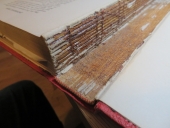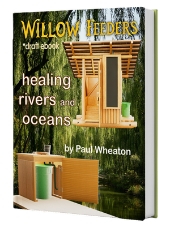
 9
9




Blog: 5 Acres & A Dream
Books: Kikobian Books | Permies Digital Market
 13
13






 2
2




Blog: 5 Acres & A Dream
Books: Kikobian Books | Permies Digital Market
 11
11




![Filename: Turkish-composite-recurve-bow.jpg
Description: [Thumbnail for Turkish-composite-recurve-bow.jpg]](/t/154527/a/130704/Turkish-composite-recurve-bow.jpg)
![Filename: turkishjoint.jpeg
Description: [Thumbnail for turkishjoint.jpeg]](/t/154527/a/130705/turkishjoint.jpeg)
“It’s said war—war never changes. Men do, through the roads they walk. And this road—has reached its end.”
 3
3




Blog: 5 Acres & A Dream
Books: Kikobian Books | Permies Digital Market
 4
4




Leigh Tate wrote:Nicole, this is great! Your books look so professional.
Question - how do you think it would work on say, a patch over a hole for a leather jacket? Do you think it would dry too stiff? Or would it be acceptable?
 8
8




Nicole Alderman wrote:
Leigh Tate wrote:Nicole, this is great! Your books look so professional.
Question - how do you think it would work on say, a patch over a hole for a leather jacket? Do you think it would dry too stiff? Or would it be acceptable?
I folded a scrap of leather about 3 hours ago with hide glue. It's very flexible. It does not feel stiff at all. I mean, it's basically really thick jello. Jello is springy and bendable (think jello gigglers or gummy bears.) It sticks together quite well. I can pull my leather apart...but I also applied it to the suede side, so basically I'm just ripping out suede to separate it.
He whai take kore noa anō te kupu mēnā mā nga mahi a te tangata ia e kōrero / His words are nothing if his works say otherwise
 2
2




M Broussard wrote:... objects that have been hide glued must not ever come into contact with water! Water will liquefy the glue and leave you with a join full of goop ...
Blog: 5 Acres & A Dream
Books: Kikobian Books | Permies Digital Market

 4
4




“It’s said war—war never changes. Men do, through the roads they walk. And this road—has reached its end.”
 4
4




M Broussard wrote:For a waterproof, natural glue with some flexibility, you could try making cheese glue (it sounds weird, but I have used it and it's pretty good!).
Blog: 5 Acres & A Dream
Books: Kikobian Books | Permies Digital Market




 1
1





|
Every plan is a little cooler if you have a blimp. And a tiny ad.
Learn Permaculture through a little hard work
https://wheaton-labs.com/bootcamp
|





